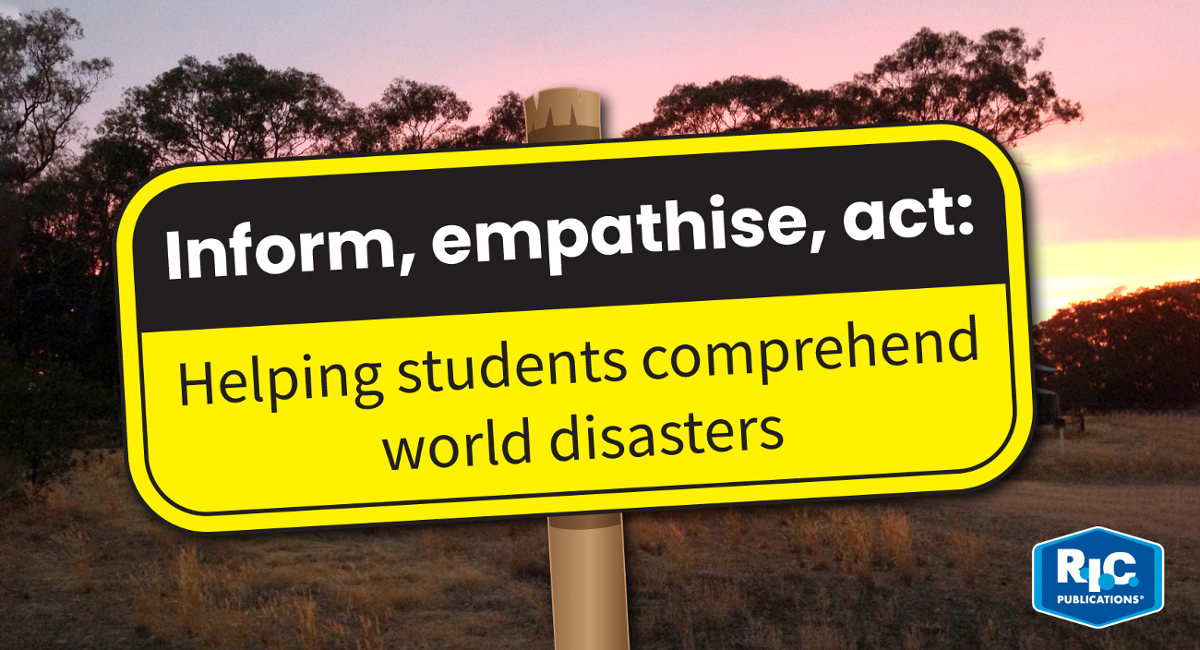- Monday 24 February 2020
- 0 Comments
After a distressing broadcasting period of one of the worst bushfires in recorded history, Australian media is now flooded with news and statistics of another crisis: the worldwide spread of the coronavirus. From natural disasters to pandemics, our students are constantly bombarded with frightening visuals and statistics like these due to the modern day’s omnipresent news cycle.
The role of adults, especially teachers, is to help children understand not only why these disasters happen, but to also teach them where and how they can make a difference. Today’s blog is dedicated to resources that will guide students through this in a three-step process: inform, empathise and act.
Inform
Students, like anybody, are more likely to fear disasters they don’t understand. In particular, younger children may struggle with comprehending the proximity of disasters: if they hear about bushfires occurring somewhere far away through the news, they may believe the danger is nearby. Similarly, although the coronavirus is currently not spreading throughout Australia, children may think otherwise because of the media’s extensive coverage. Teaching about these disasters at an informational level therefore needs to go beyond explaining what a problem is and towards providing a sense of perspective.
Resources for younger students:
- Behind the News—Bushfire season: https://www.abc.net.au/btn/classroom/bushfire-season/11505884
- DFES—Schools: https://www.dfes.wa.gov.au/schooleducation/schools/Pages/preprimary.aspx
- Cincinnati Children’s—How germs spread: https://www.youtube.com/watch?v=YBGsoimPXZg
Resources for older students:
- ABC News (Australia)—The science of bushfires explained: https://www.youtube.com/watch?v=l38UkQmUISs
- DFES—Schools: https://www.dfes.wa.gov.au/schooleducation/schools/Pages/years3-6.aspx
- Behind the News—Coronavirus explained: https://www.youtube.com/embed/xGTGaUBwj6c?start=10&end=98
Empathise
Once the ‘why’ and ‘how’ of disasters is covered, the next step is to help students develop their emotional intellect in response to such events, especially towards considering others. What are people in these situations feeling? What is it like to not be able to return to your home? What about those who aren’t directly affected by the disaster, but have relatives who are?
Understanding emotional responses like these is closely linked with English outcomes from the Australian Curriculum. Consider reading through books as a class that explore disasters from an emotional perspective, such as the resources below. A follow-up activity could involve students writing their own stories or poetry to explore the point of view of someone who has experienced a disaster.
Resources for younger students:
- Children’s Health Queensland Hospital and Health Service—Birdie stories: https://www.childrens.health.qld.gov.au/chq/our-services/mental-health-services/qcpimh/natural-disaster-resources/storybooks/
Resources for older students:
- Jackie French—The natural disaster picture books (Only available in physical copy): http://www.jackiefrench.com/scholastic-books
Act
It’s normal for people—both children and adults—to be overcome by a sense of powerlessness when disasters occur. More than anything, we want to be able to assist those in trouble or prevent further disaster. Thankfully there are things that everyone, including students, can do to help.
For the bushfires, students could write thank you letters to the firefighters and volunteers that worked to keep everyone safe. Here is a list of addresses of where to send these for every state:
- CFA: PO Box 701, Mount Waverley, VIC, 3149
- CFS: GPO Box 2468, Adelaide, SA, 5001
- NSW RFS: Locked Mailbag 14, Granville, NSW, 2142
- DFES: PO Box P1174, Perth, WA, 6844
- QFES: GPO Box 1425, Brisbane, QLD, 4001
- ACT ESA: GPO Box 158, Canberra, ACT, 2601
- NTFRS: https://pfes.nt.gov.au/contact-us/fire-and-rescue-general-enquiries
Alternatively, consider a classroom fundraiser; many of the organisations involved in bushfire recovery are requesting money over physical donations.
For the coronavirus and other illnesses, remind students that they have the power to prevent the spread of disease by washing their hands, keeping the classroom clean and staying home when they feel unwell.
At RIC Publications, we have a range of excellent educational resources on civics and citizenship for your students to explore.
